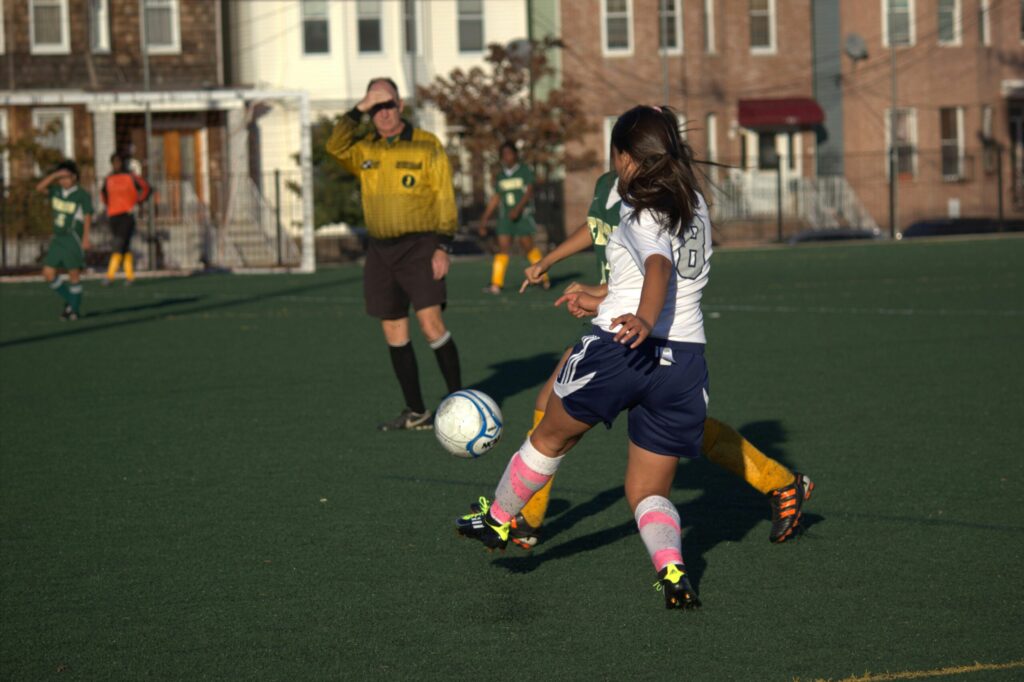Elevate Your Game with These Innovative Training Techniques

Elevate Your Game with These Innovative Training Techniques
In the ever-evolving landscape of sports, the age-old adage “practice makes perfect” has been both challenged and reinforced by new training methodologies. As athletes strive to gain that elusive edge over their competitors, innovative training techniques have emerged, transforming the way we approach athletic performance. So, whether you’re a seasoned pro or a weekend warrior, there’s a good chance you’ll find something here that resonates with your own training journey.
Take a moment to think back to your early days in sports. Remember the thrill of learning a new skill, the sweat trickling down your forehead as you pushed through a grueling session? Well, times have changed, and so have the ways we train. Let’s dive into some of the most groundbreaking techniques that promise to elevate your game.
1. Functional Training: Moving Beyond Traditional Lifts
When I first heard about functional training, I was skeptical. After all, how could flipping tires or jumping over hurdles possibly replace my trusty bench press? But it struck me that functional training focuses on movements that are directly applicable to athletic performance. It’s about training the body for real-life movements, enhancing not just strength, but also coordination, balance, and endurance.
Functional training encompasses a variety of exercises that mimic the specific movements of a sport. For instance, a soccer player might integrate lateral lunges and single-leg squats to enhance their agility on the field. A basketball player, on the other hand, may benefit from plyometric drills that improve their vertical leap. The beauty of functional training lies in its versatility. You can adapt it to suit any sport or fitness goal.
Some popular functional training exercises include:
- Medicine ball throws
- Kettlebell swings
- Battle ropes
- Agility ladder drills
- TRX suspension training
While these exercises might not replace traditional strength training entirely, they can certainly complement it, helping athletes become more well-rounded in their physical capabilities. And, let’s be honest, who doesn’t want to flip a tire in the gym and feel like a superhero?
2. High-Intensity Interval Training (HIIT): Efficiency Meets Effectiveness
If you’re strapped for time—or perhaps just looking for a way to spice up your workout routine—high-intensity interval training (HIIT) might be your new best friend. This innovative training technique involves short bursts of intense exercise followed by brief recovery periods. It’s like the espresso shot of workouts—quick, powerful, and effective.
Research has shown that HIIT can improve cardiovascular fitness, enhance metabolism, and even promote fat loss in a fraction of the time of traditional steady-state cardio. I remember the first time I tried a HIIT workout; I was gasping for breath within minutes, but the endorphin rush was undeniable. And the best part? You can do it anywhere, whether at the gym, in your living room, or even outdoors.
Here’s a sample HIIT workout you might enjoy:
- 30 seconds of burpees
- 30 seconds of rest
- 30 seconds of squat jumps
- 30 seconds of rest
- 30 seconds of mountain climbers
- 30 seconds of rest
- 30 seconds of push-ups
- 30 seconds of rest
Repeat this circuit 3-5 times depending on your fitness level, and you’ll find yourself sweating buckets in no time. Just don’t forget to hydrate—trust me, your body will thank you later.
3. Mindfulness and Mental Training: The Unsung Hero of Performance
Let’s switch gears for a moment and talk about something that often gets overshadowed in the world of physical training: the mind. More and more athletes are recognizing the importance of mental training techniques, and it’s about time. I mean, how many times have you watched a game and thought, “If only that player had kept their cool…”?
Mindfulness practices such as meditation, visualization, and breathing exercises can significantly enhance focus, reduce anxiety, and improve overall performance. I remember watching a documentary about a professional golfer who attributed his success to daily visualization exercises. He would picture himself sinking each putt before stepping onto the green, and lo and behold, his game improved by leaps and bounds.
Here are a few mental training techniques that can complement your physical training:
- Guided imagery: Picture yourself succeeding in your sport.
- Breathing exercises: Control your breath to manage anxiety and enhance focus.
- Positive affirmations: Repeat encouraging statements to build confidence.
- Mindfulness meditation: Practice being present and aware during training sessions.
Incorporating these techniques into your training routine can help you develop a stronger mental game, which is just as crucial as physical prowess in competitive sports.
4. Recovery Techniques: The Art of Rest
It’s often said that training is only half the battle; recovery is just as important. And yet, I can’t tell you how many athletes I’ve met who treat recovery like an afterthought. (I’ve been guilty of this myself.) Innovative recovery techniques have emerged, emphasizing the importance of allowing the body to heal and rejuvenate after intense training or competition.
From foam rolling to cryotherapy, there are numerous ways to aid recovery. For instance, foam rolling helps release muscle tightness and improve blood flow, while cryotherapy exposes the body to extremely cold temperatures to reduce inflammation. I once tried a cryotherapy session, and while it felt like I was stepping into a freezer, the post-session lightness in my legs was nothing short of miraculous.
Some other recovery techniques worth exploring include:
- Active recovery: Engage in low-intensity activities like walking or swimming.
- Hydration and nutrition: Fuel your body with the right nutrients and fluids to aid recovery.
- Massage therapy: Seek out a professional for muscle relief.
- Sleep: Prioritize quality sleep—your body does most of its healing while you snooze.
Remember, rest is not a sign of weakness; it’s an essential component of any successful training regimen. Don’t hesitate to give your body the break it deserves.
5. Technology Integration: The Future is Now
Ah, technology—the double-edged sword of our modern lives. On one hand, it can be a distraction; on the other, it can be an invaluable tool for enhancing athletic performance. Wearable technology, mobile apps, and advanced analytics have taken training to a whole new level. I still chuckle at the time I tried to outsmart my fitness tracker, only to be humbled by its accurate readings of my less-than-stellar workout.
Wearable devices, such as smartwatches and heart rate monitors, provide real-time feedback on your performance, helping you to make data-driven decisions about your training. For instance, a runner can track their pace, heart rate, and distance, allowing them to adjust their training intensity on the fly. Meanwhile, apps like Strava and MyFitnessPal not only help you log your workouts but also foster a sense of community through social sharing.
Here are some ways technology can enhance your training:
- Data analytics: Track your progress and identify areas for improvement.
- Virtual coaching: Access expert advice and training plans from anywhere in the world.
- Remote training: Connect with fellow athletes and trainers through online platforms.
- Gamification: Use apps that turn workouts into games, making fitness fun and engaging.
Whether you embrace technology wholeheartedly or approach it with a hint of skepticism, there’s no denying its potential to elevate your game. Just remember to unplug every once in a while—balance is key!
6. Cross-Training: Diversifying Your Skills
Ever heard the saying, “Jack of all trades, master of none”? Well, in the world of sports, being a jack of all trades might just be the secret sauce to mastering your game. Cross-training involves engaging in different sports or activities to enhance overall athletic performance. It’s like giving your body a buffet of experiences—each one contributing to your growth as an athlete.
When I was a teenager, I played soccer, basketball, and swam—sometimes all in the same week! While I didn’t realize it at the time, cross-training helped me develop a diverse skill set that benefited my primary sport. Plus, it kept things interesting; who wants to do the same thing day in and day out?
Some benefits of cross-training include:
- Injury prevention: Different activities work different muscle groups, reducing the risk of overuse injuries.
- Improved overall fitness: Engaging in various sports can enhance your strength, endurance, and flexibility.
- Enhanced skills: Skills learned in one sport can often translate to another—think agility from basketball helping in soccer.
- Increased motivation: Mixing things up can reignite your passion for sports.
So, whether you fancy a round of tennis, a spin class, or a hike in the great outdoors, don’t hesitate to step outside your comfort zone. Your body—and mind—will thank you for it.
7. Nutrition and Hydration: Fueling Your Performance
As much as I’d love to tell you that the secret to athletic success lies solely in your training regimen, the truth is that nutrition plays an equally crucial role. You wouldn’t put regular gasoline in a high-performance car, would you? The same principle applies to your body. Fuel it with the right nutrients, and you’ll see a marked improvement in your performance.
Nutrition isn’t just about what you eat; it’s about timing, portion sizes, and hydration as well. I learned this lesson the hard way during my early days of training. I’d wolf down a greasy burger post-workout, only to find myself sluggish for days. Now, I’m much more mindful of my choices. Here are some key nutritional considerations:
- Carbohydrates: Provide the energy needed for intense workouts. Think whole grains, fruits, and veggies.
- Protein: Essential for muscle repair and growth. Lean meats, legumes, and dairy are your friends.
- Fats: Don’t fear healthy fats! They aid in hormone production and overall health. Avocados, nuts, and olive oil are great options.
- Hydration: Staying hydrated is non-negotiable. Aim for at least half your body weight in ounces of water daily, and don’t forget to replenish electrolytes during intense sessions.
Incorporating these principles into your daily routine can be a game-changer. Experiment with different foods and timing to discover what works best for your body.
8. Sport-Specific Drills: Tailoring Your Training
Let’s finish off with something that’s often overlooked but incredibly effective: sport-specific drills. While general training is essential, honing skills that directly pertain to your sport can yield impressive results. Whether you’re dribbling a basketball, swinging a racket, or kicking a soccer ball, the more you practice your specific skills, the better you’ll perform in competition.
I vividly remember the days spent at the basketball court, practicing free throws until my fingers felt numb. Back then, it seemed tedious, but those hours paid off when I sank crucial shots during games. The same principle applies across all sports: repetition breeds mastery.
Here are a few sport-specific drill ideas to consider:
- Basketball: Work on your shooting form and footwork with targeted drills.
- Soccer: Focus on dribbling skills and passing accuracy through small-sided games.
- Swimming: Refine your stroke technique and starts with timed sets.
- Running: Incorporate sprint intervals and hill workouts to enhance speed and endurance.
As you design your training plan, make sure to include drills that align with your sport’s unique demands. You’ll not only see improvements in your performance but also experience the satisfaction of mastering your craft.
Conclusion: The Journey of Elevation
As I wrap up this exploration of innovative training techniques, I’m reminded that the journey of athletic improvement is ongoing. It’s not just about finding the latest trends or fads; it’s about discovering what works best for you and your goals. Every athlete is unique, and the beauty of sport lies in its diversity.
So, whether you’re flipping tires in the gym, sprinting through a HIIT workout, or perfecting your free throws, remember to embrace the process. Celebrate the small victories, learn from your setbacks, and most importantly, enjoy the ride. In the end, elevating your game isn’t just about winning; it’s about becoming the best version of yourself.
Now, go on and put some of these techniques into practice! Who knows—maybe the next time you hit the field, court, or track, you’ll surprise yourself with just how far you’ve come.






